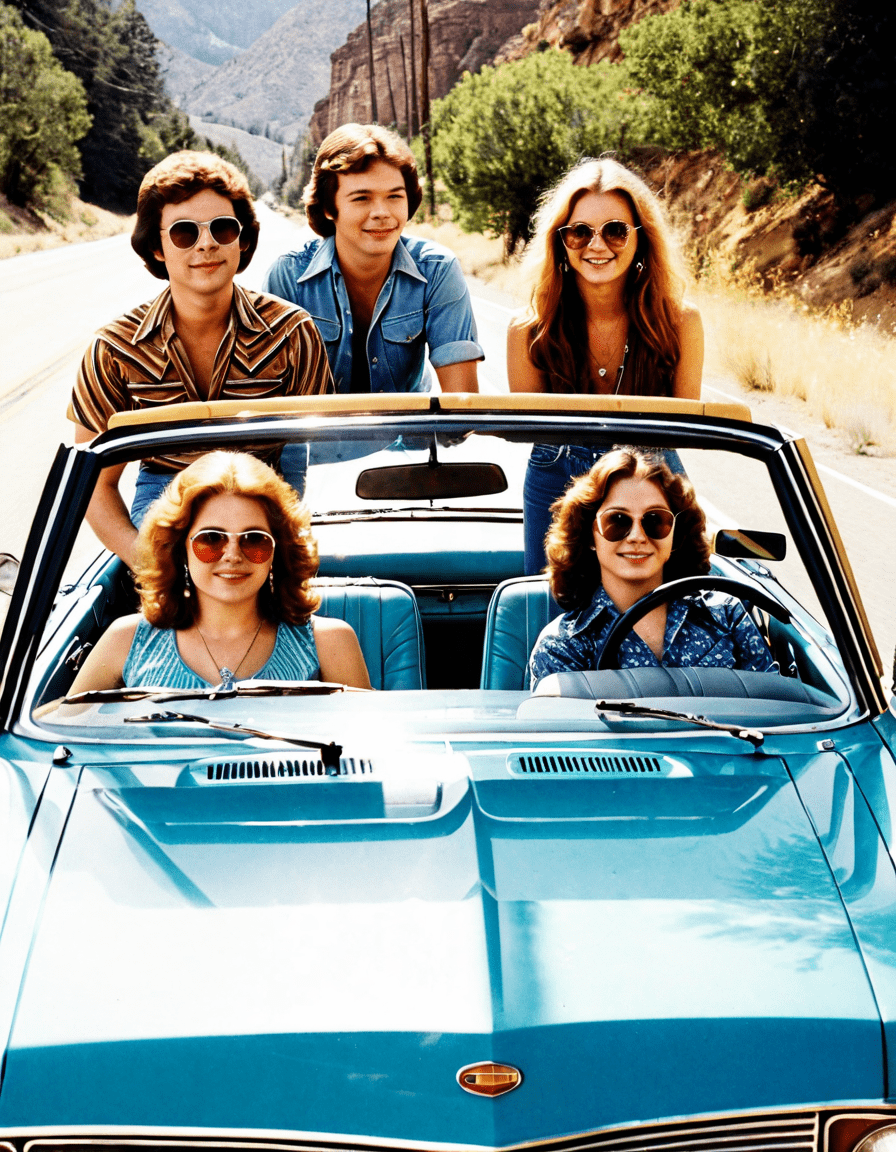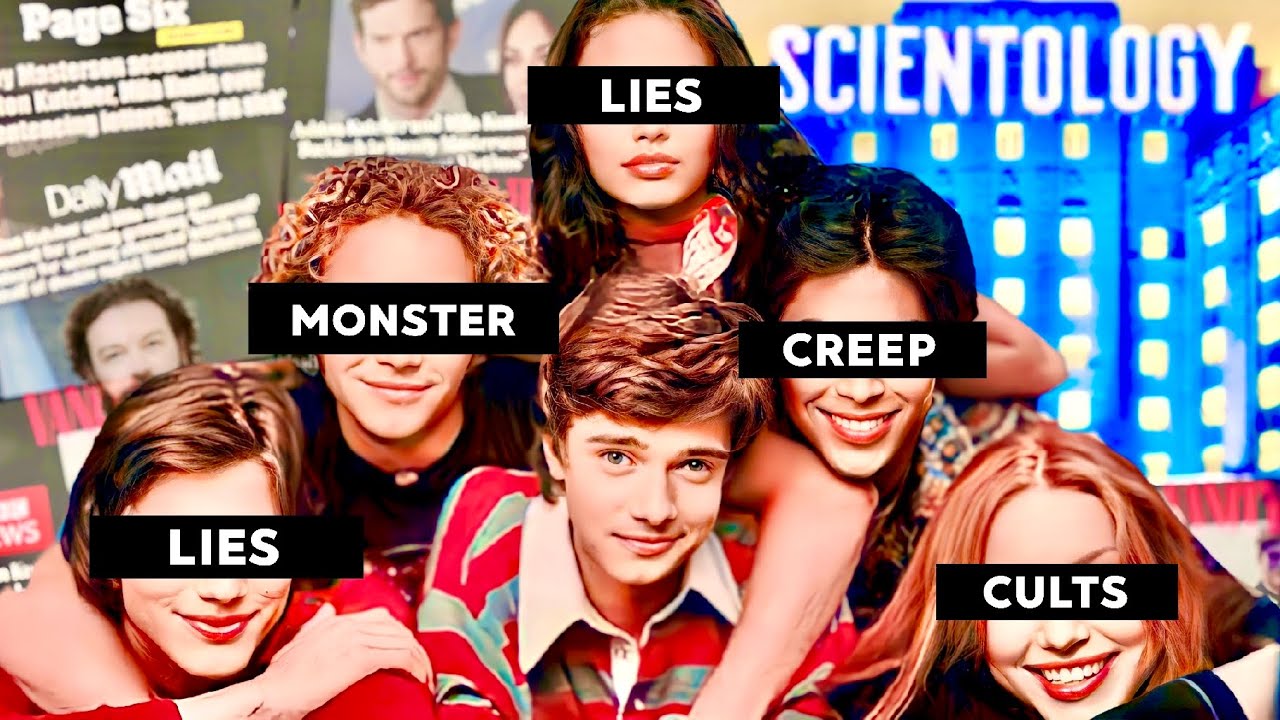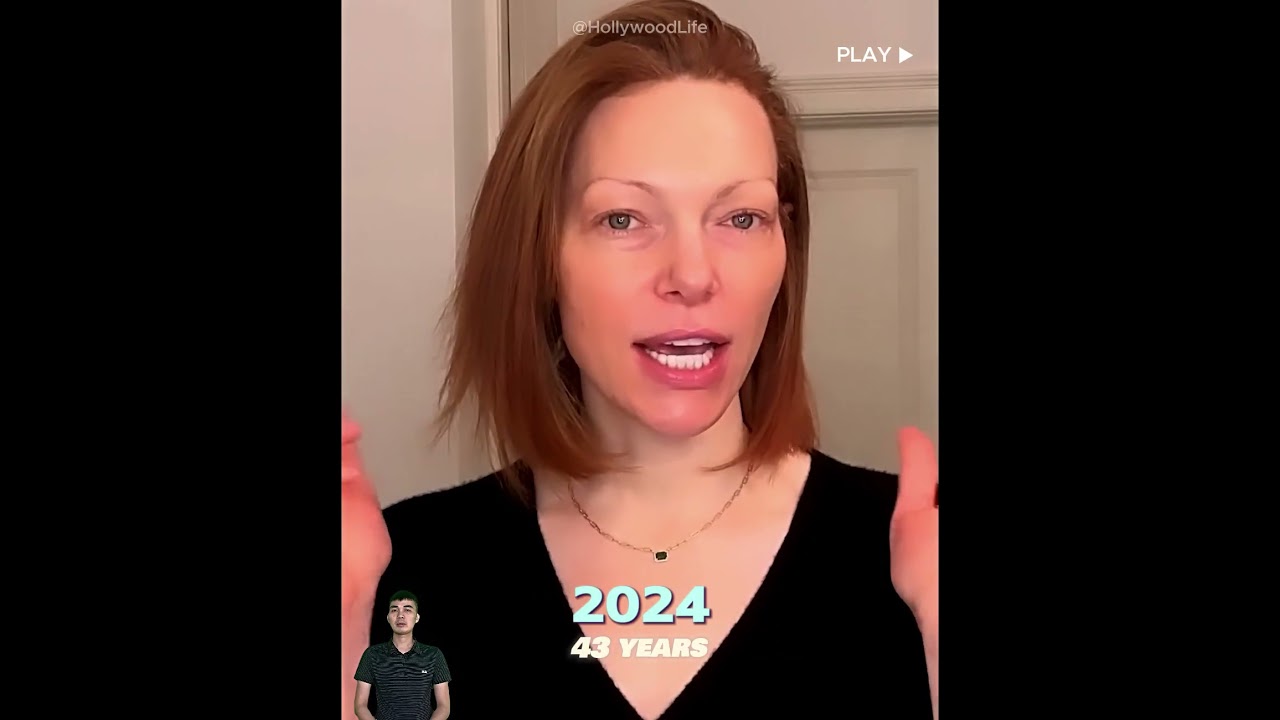When it comes to television sitcoms that have left a lasting mark on pop culture, the That 70s Show cast stands out like a bright disco ball in a dimly lit room. This nostalgic throwback to teenage life in the 1970s brought together a group of actors whose on-screen chemistry was simply electric. Stars like Topher Grace, Mila Kunis, and Ashton Kutcher formed a tight-knit bond that went beyond scripted dialogue, making their interactions feel more like a genuine gathering of friends rather than a work environment. As cinephiles, we can’t help but dissect what made their chemistry so captivating. Here are seven key elements that contributed to the legendary dynamic among the That 70s Show cast.
Top 7 Elements of Chemistry Among the That 70s Show Cast
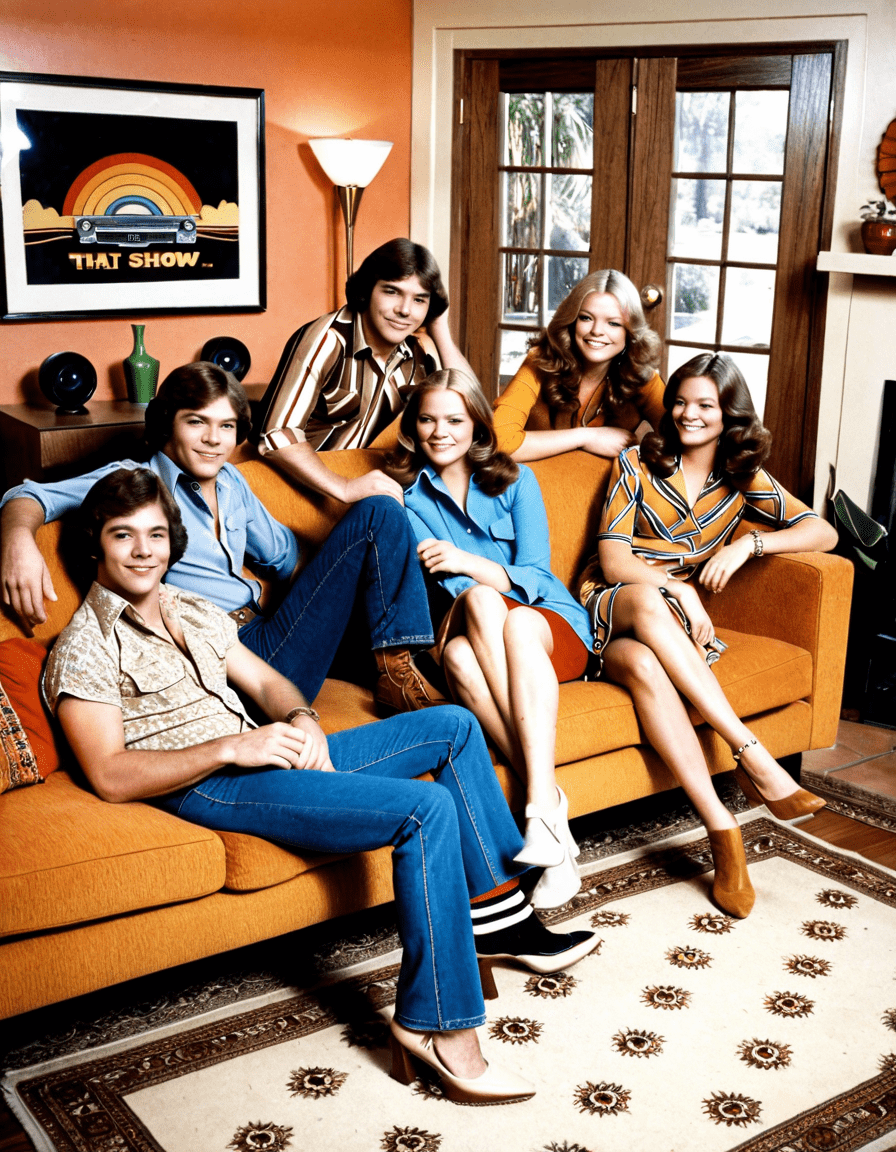
1. Authentic Relationships
The cast members had personal relationships that blossomed both on and off the screen. Mila Kunis and Ashton Kutcher, who originally met as teenagers while filming the show, went from portraying on-screen lovers to real-life partners. This authenticity brought depth to their characters, making emotional moments genuine and relatable. Their joyous camaraderie wasn’t just a performance; it was a real connection, which can be further discovered in their encounters at events or interviews.
2. Shared Upbringing
The That 70s Show cast grew up in the 1980s and 1990s, shaping their understanding of the 1970s. Topher Grace, who played Eric Forman, often infused his character with memories rooted in his teenage years, allowing him to resonate deeply with the audience. Each actor’s backstory and personal anecdotes helped fortified the show’s narrative. These shared experiences created a collective sense of nostalgia, making their performances feel authentic and relatable.
3. Collaborative Improvisation
Improvisation played an essential role in enhancing the organic vibe among the That 70s Show cast. The actors regularly bounced off each other’s energy, resulting in some of the most memorable scenes. Iconic moments, like Eric’s goofy antics and Kelso’s laughably clueless comments, often originated from unscripted dialogue. This spontaneity fostered an atmosphere of creativity where each actor felt encouraged to explore their characters more freely.
4. Strong Supporting Characters
Every main character needed a strong supporting ensemble. That’s where actors like Debra Jo Rupp and Don Stark came into play as Kitty Forman and Bob Pinciotti. Their performances added layers to the narrative, showing how effective ensemble acting can elevate a show. The chemistry among the entire cast was vital, highlighting the camaraderie that the audience found so compelling.
5. Well-Written Material
One of the standout features of That 70s Show was its sharp writing. Scribes Bonnie Turner and Terry Turner created narratives that perfectly showcased each character’s strengths while developing humorous yet poignant scenarios. This thoughtful dialogue not only made the comedy relatable but also exhibited the characters’ emotional growth. The mix of comedy and heartfelt moments solidified the audience’s affection for the characters, exemplifying the skill behind the scenes.
6. Chemistry Reads and Casting
From the very beginning, the producers focused on the chemistry between actors. During auditions, they looked for that spark—an intangible quality that signaled great potential. Topher Grace and Mila Kunis clearly showed their on-screen connection during the casting process, ensuring they would work well together. This early attention to chemistry paid off in spades, resulting in a cohesive cast that resonated with fans.
7. Shared Work Ethic and Passion
The That 70s Show cast had a relentless drive and passion for their craft. Many members were relatively new in Hollywood, striving to make a significant impact. This shared commitment fostered an environment where they supported each other’s performances, ensuring they delivered exceptional-quality work that connected with viewers. Their dedication to the project didn’t just make for entertaining television; it built lasting friendships that transcended the show itself.
The Impact of That 70s Show on American Culture
The influence of the That 70s Show cast went far beyond their sitcom. It shaped cultural attitudes across the US in the early 2000s, reflecting the struggles and joys of teenage life, love, and rebellion. This classic program became a cultural phenomenon, redefining fashion trends and introducing terminology that resonated with young viewers.
The show encapsulated the essence of adolescence, portraying relatable dilemmas mixed with the nostalgia of the 70s aesthetic. Characters like Donna Pinciotti and Jackie Burkhart represented a variety of female experiences, inspiring young women to embrace their individuality. The That 70s Show dynamic helped viewers navigate complex social themes while maintaining a light-hearted comedic lens.
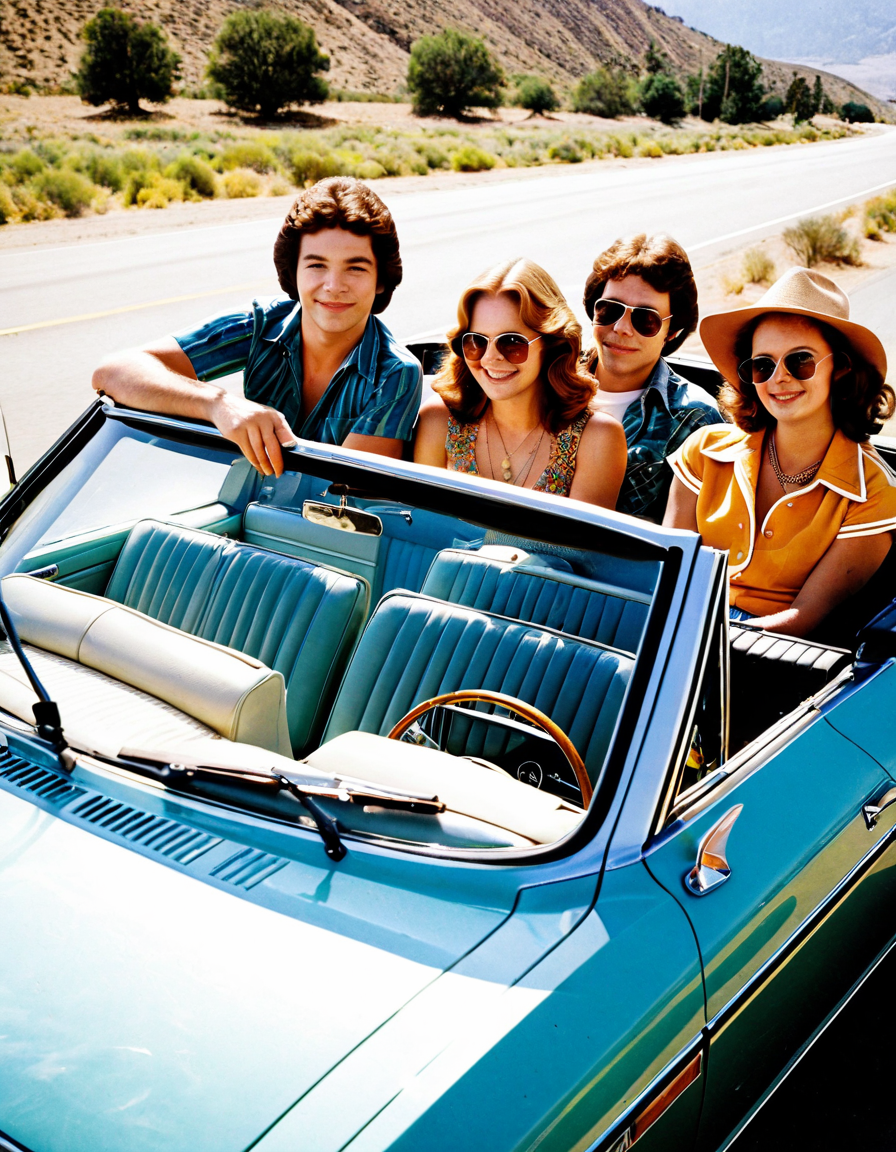
Lasting Legacy and Reunion Potential
As we stride deeper into the 2020s, the legacy of That 70s Show remains undeniably powerful. The rising nostalgia for the era has sparked discussions about possible reunions or spinoffs featuring the original cast. Many believe that any revival would harness the same authentic chemistry that made the show such a hit.
The friendships formed behind the camera continue to thrive, with cast members often sharing anecdotes from their time on set. As the pandemic whipped up a wave of revivals, one cannot help but imagine the excitement of a reunion where these beloved characters navigate today’s twist on teenage life.
The chemistry among the That 70s Show cast isn’t just a fleeting memory; it solidified the series’ place as one of the most cherished comedies of its time. Their bond not only made for classic television but also paved the way for more engaging sitcoms. The legacy lives on through laughter, nostalgia, and the undeniable joy they brought to audiences everywhere.
Feel the vibes, and if you’re ever needing a laugh or some heartfelt moments, make sure to revisit That 70s Show—the charm and wit of the cast will always be there, ready to remind us of those unforgettable years. Whether you’re catching reruns or diving into the show for the first time, the magic of the That 70s Show cast is timeless, fitting snugly into the collections of cult classics we all know and love.
That 70s Show Cast: Secrets Behind Their Legendary Chemistry
Behind the Scenes Magic
The chemistry among the that 70s show cast wasn’t just a product of great writing; it stemmed from something deeper. For instance, Mila Kunis, who played Jackie Burkhart, didn’t have any romantic interest in her on-screen boyfriend Ashton Kutcher, who portrayed Michael Kelso. Instead, she was dating him in real life, which added a fun layer to their on-screen antics. Talk about life imitating art! Behind the scenes, these close friendships helped create those memorable group dynamics that fans still cherish today. Fans might also be surprised to learn that some cast members enjoyed tying the knot earlier than expected, like Amber Wright, who made a name for herself well before joining the iconic series.
Little Known Facts
It’s fascinating how actors often draw from personal experiences to create genuine performances. Take Danny Masterson, who played Hyde; he wasn’t just acting—it’s noted that he used his own teenage experiences to shape his character’s rebellious attitude. This authenticity is what helped the that 70s show cast forge a bond that felt completely real. Speaking of real, did you know that the show’s set was modeled after creator Bonnie Turner’s actual home? This attention to detail really highlighted the show’s vibrant 70s vibe. And speaking of vibes, who could forget the iconic G string outfit worn by the cast during various hilarious escapades that showcased their camaraderie and comedic timing?
Cultural Crossovers
In a tribute to its pop culture influence, “That 70s Show” often referenced modern shows like The Simpsons. Such nods not only enriched the humor but also left fans buzzing about the multiple layers of comedy presented throughout the series. The richness of the 1970s scene was also reflected in their unique choices, which sometimes leaned towards the unconventional, like musical numbers featuring a harmonium. Even today’s younger crowds feel the effects of the 70s era, leading to trends reminiscent of the past, such as those seen in the Backpack Boyz. This blend of nostalgia and pop culture makes the show an evergreen classic, forcing us to reckon with how much these antics resemble today’s generation’s social hangouts. The backdrop of the era was essential, setting the stage for dialogues that captured the playful yet edgy tone of youth camaraderie.
Engaging with trivia like these slices of behind-the-scenes life really makes you appreciate the lengths the that 70s show cast went to bring their characters to life. It’s more than just a show; it’s a snapshot of friendships, youth, and all the ups and downs that come with them.
